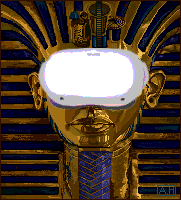Cheap and Cheerful
In my post recent about the dawn of the Mac, I alluded to the fact that I didn’t have a Mac at all until much later, but instead grew up on other platforms. I’d like to expand on this a little.
For much of the late eighties and early nineties, the computer market was bifurcated, at least on this side of the Atlantic. Powerful, and correspondingly expensive, PCs and Macs were increasingly prevalent in the workplace. In homes, however, there was a completely separate ecosystem. Amigas (and Ataris) weren’t generally as powerful as their business rivals, peripherals like displays were rougher around the edges (more often than not, it was just a regular TV), and advances like hard drives were slower to arrive.
Nevertheless, the fundamentals of what was then the leading edge of computing — graphical user interfaces, applications such as word processing and desktop publishing, and so on — were all present and correct. These platforms allowed people a gateway into this world at a price that was literally an order of magnitude cheaper. You could get a complete system for a for a few hundred pounds, rather than a few thousand.
Back in the present day, I’m typing this on a wall-size display in my Meta Quest 2. Yes, the resolution could be better, the hand tracking keeps kicking in as I type, and the passthrough looks like 16mm film that’s been left in an Argentinian basement for fifty years, but it’s easily good enough to give a taste of the possibilities, and might even be useful. The games are pretty good, too.

Image based on Avril Harrison’s iconic King Tut, which adorned the box of Deluxe Paint III.